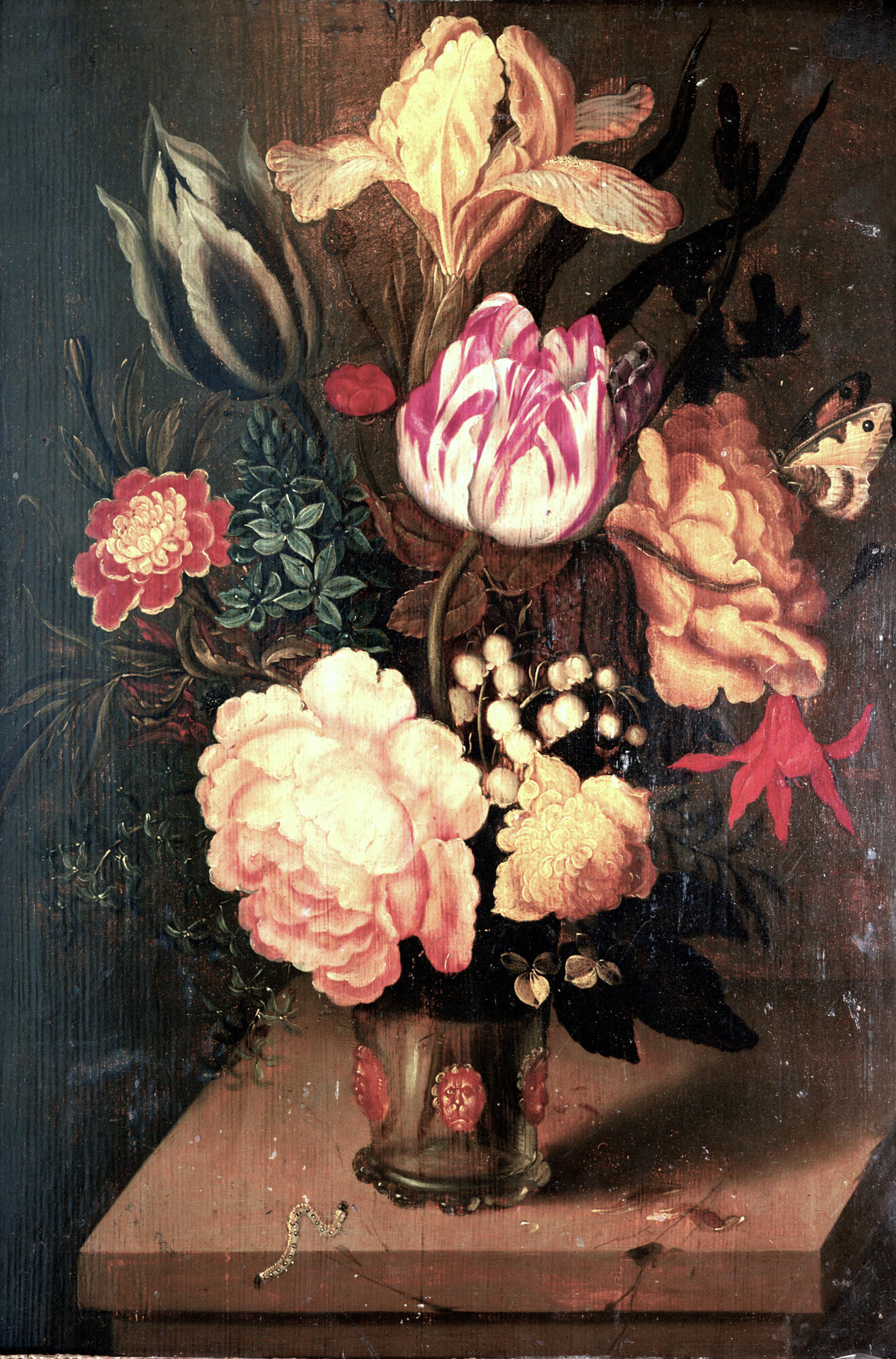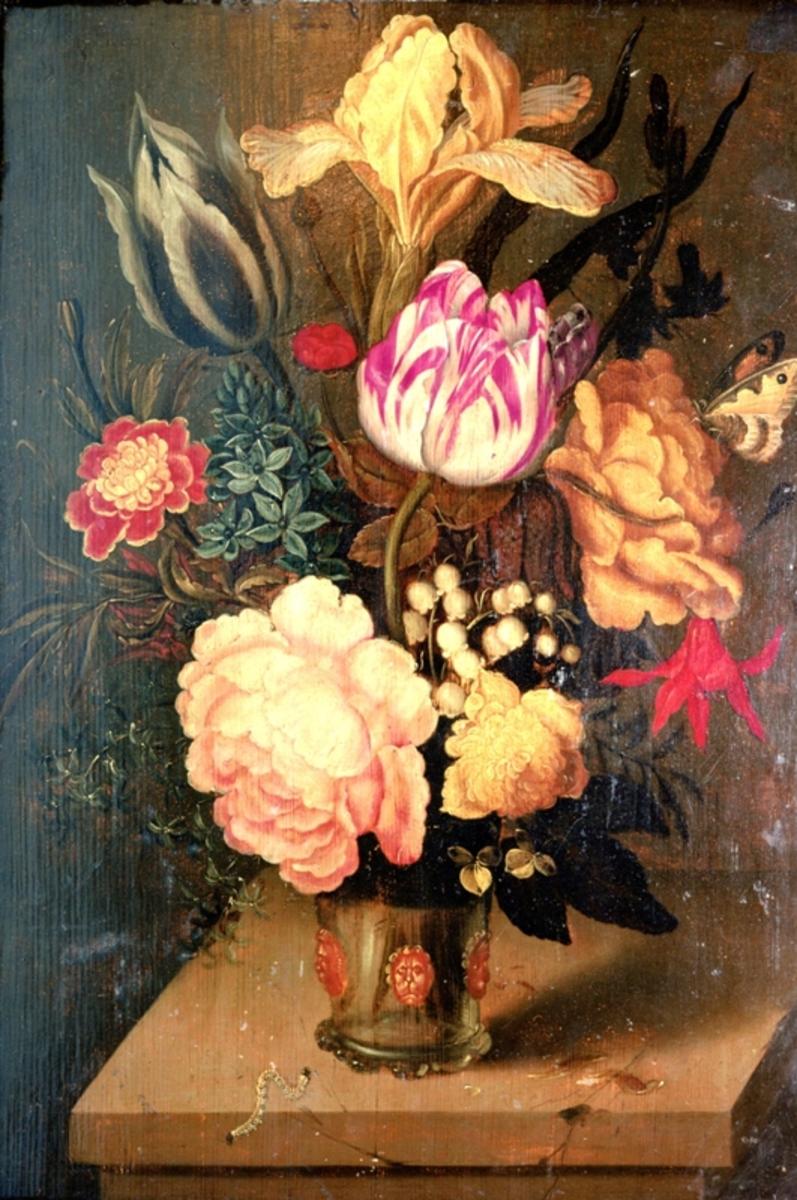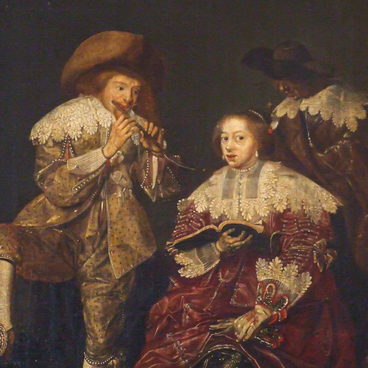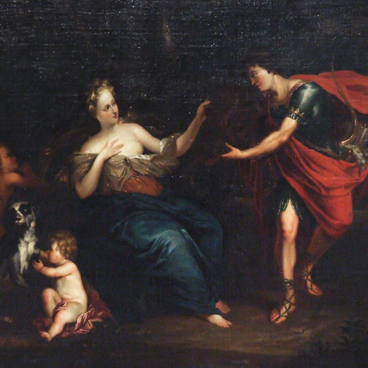The picture “Flowers in a Vase” was painted by Ambrosius Bosschaert the Elder, a Dutch artist, one of the founders of flower still life as a separate genre of painting. The genre was based on the admiration for the beauty of flowers, their symbolism, transience and an infinite number of combinations. The works of Bosschaert, like his contemporary Jan Brueghel the Elder, were distinguished by vibrant colors and the meticulous depiction of details.
Bosschaert the Elder masterfully painted the outlines of flower leaves and delicate, translucent petals. He captured the smallest details with pinpoint brush strokes, filling the picture with light grace. Bosschaert enlivened the flora by planting a butterfly on a flower and a caterpillar on the stone table.
The flowers that are featured in Bosschaert’s painting bloom at different times of the summer. Such a bouquet would be possible only in the imagination and in the artist’s painting. Bosschaert the Elder carefully studied the rose, peony, lily of the valley, fritillaria, iris, anemone, lily, matthiola, hyacinth, violet and tulips. He made sketches and memorized the structure of each flower. The composition of the bouquet is well balanced — all flowers differ in the length of stems, the volume of inflorescences, color and shape — this enables the artist to arrange them in such a way that they do not obscure each other and evenly fill the pictorial space. The general floral ornament resembles a carpet pattern, where the splendor of nature is subject to the laws of geometry.
The Dutch art of the 17th century used the language of allegory. The image of any object could have an allegorical meaning. Lilies of the valley in a flower still life symbolized virginity and purity, violets — modesty, peonies — the transience of life, and butterflies indicated the immortality of the soul. Bosschaert the Elder also worked in the baroque vanitas genre, which was characterized by images of fading nature as a metaphor of human death. In the painting “Flowers in a Vase” there is a fallen stem and several dark inflorescences in the background.
After the artist’s death, his work was continued by his eldest son, Ambrosius Bosschaert, the Younger, or the Second.
Bosschaert the Elder masterfully painted the outlines of flower leaves and delicate, translucent petals. He captured the smallest details with pinpoint brush strokes, filling the picture with light grace. Bosschaert enlivened the flora by planting a butterfly on a flower and a caterpillar on the stone table.
The flowers that are featured in Bosschaert’s painting bloom at different times of the summer. Such a bouquet would be possible only in the imagination and in the artist’s painting. Bosschaert the Elder carefully studied the rose, peony, lily of the valley, fritillaria, iris, anemone, lily, matthiola, hyacinth, violet and tulips. He made sketches and memorized the structure of each flower. The composition of the bouquet is well balanced — all flowers differ in the length of stems, the volume of inflorescences, color and shape — this enables the artist to arrange them in such a way that they do not obscure each other and evenly fill the pictorial space. The general floral ornament resembles a carpet pattern, where the splendor of nature is subject to the laws of geometry.
The Dutch art of the 17th century used the language of allegory. The image of any object could have an allegorical meaning. Lilies of the valley in a flower still life symbolized virginity and purity, violets — modesty, peonies — the transience of life, and butterflies indicated the immortality of the soul. Bosschaert the Elder also worked in the baroque vanitas genre, which was characterized by images of fading nature as a metaphor of human death. In the painting “Flowers in a Vase” there is a fallen stem and several dark inflorescences in the background.
After the artist’s death, his work was continued by his eldest son, Ambrosius Bosschaert, the Younger, or the Second.



